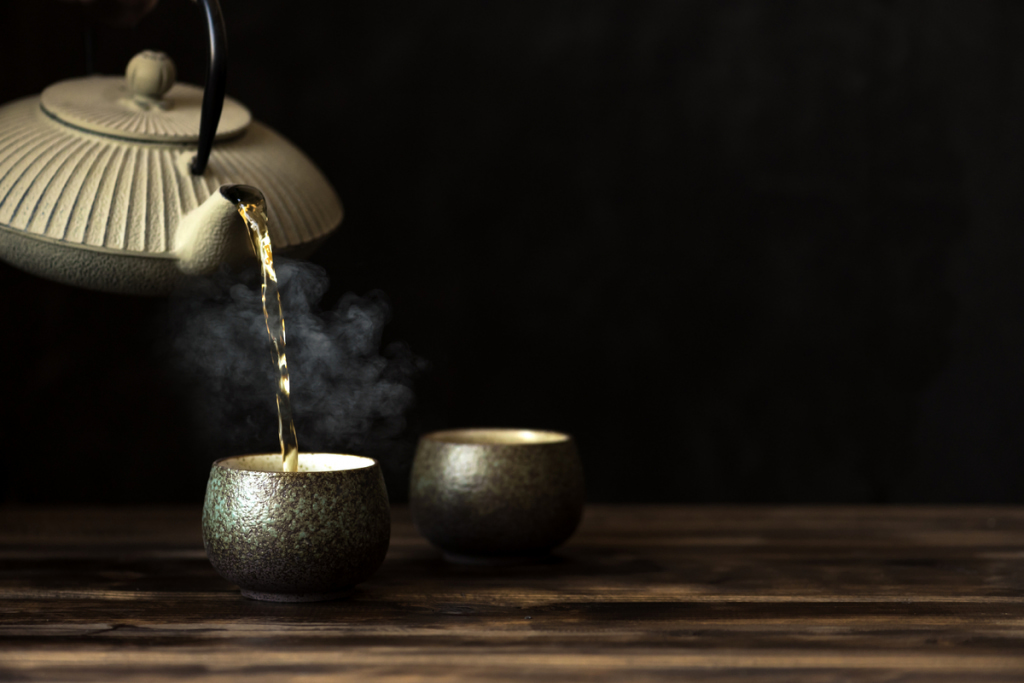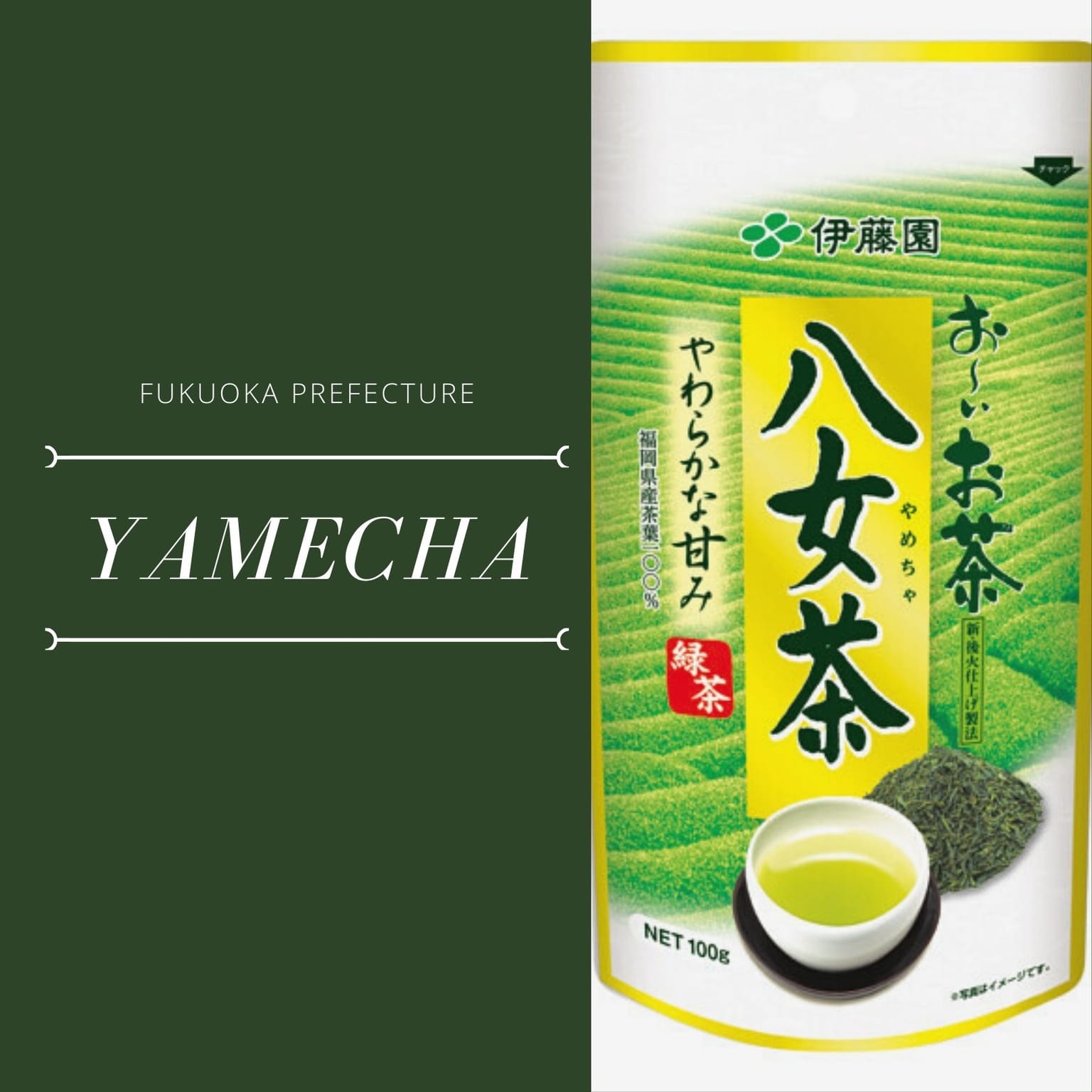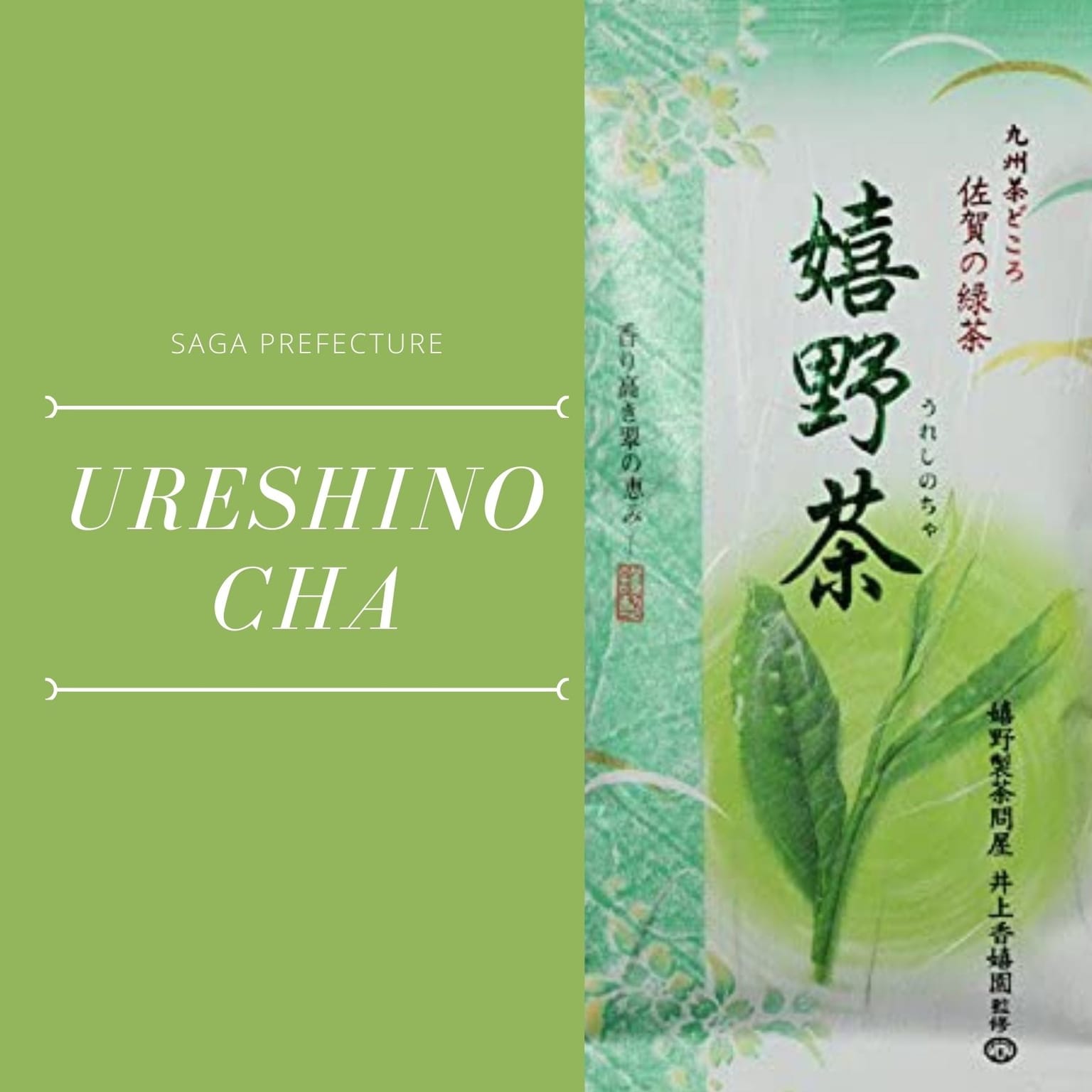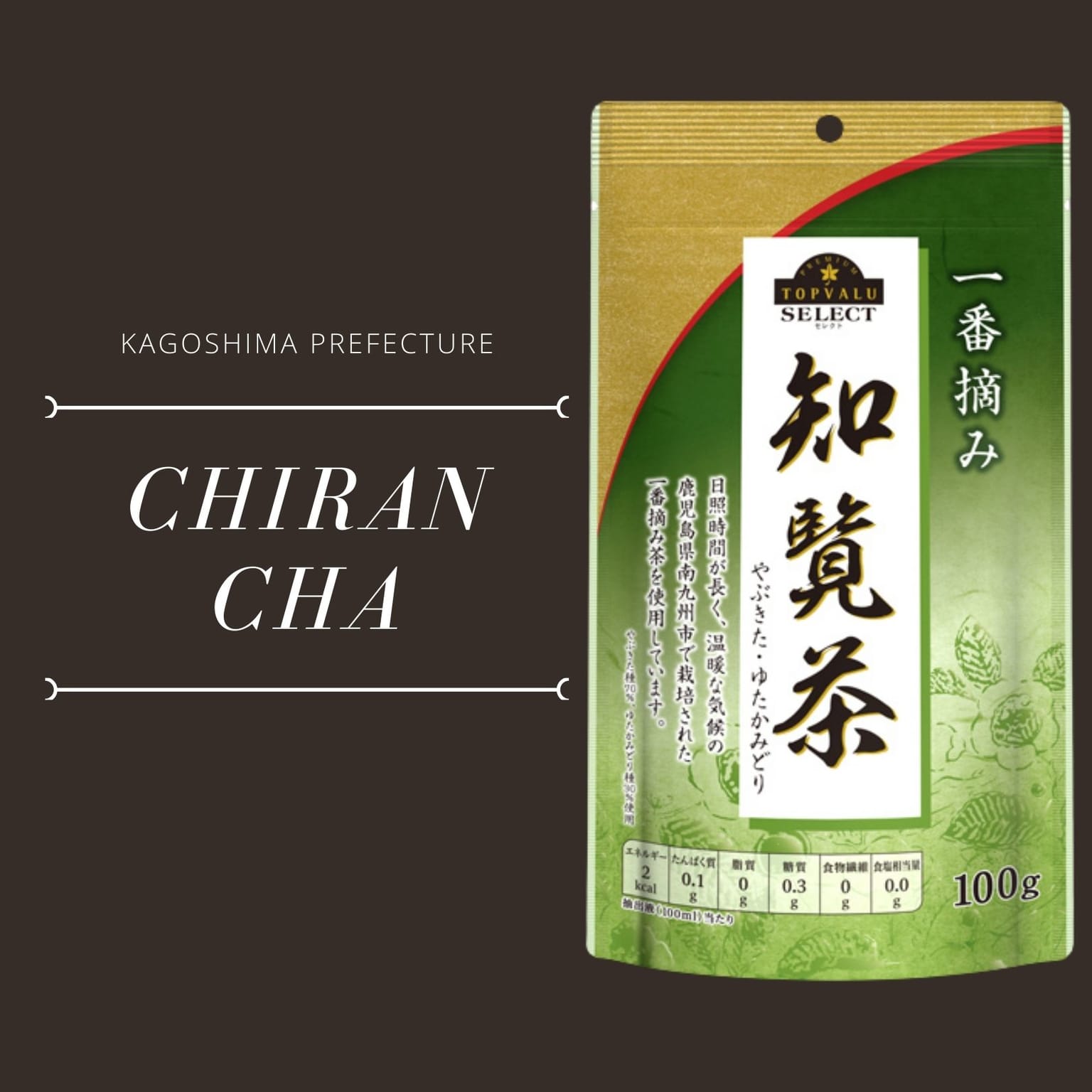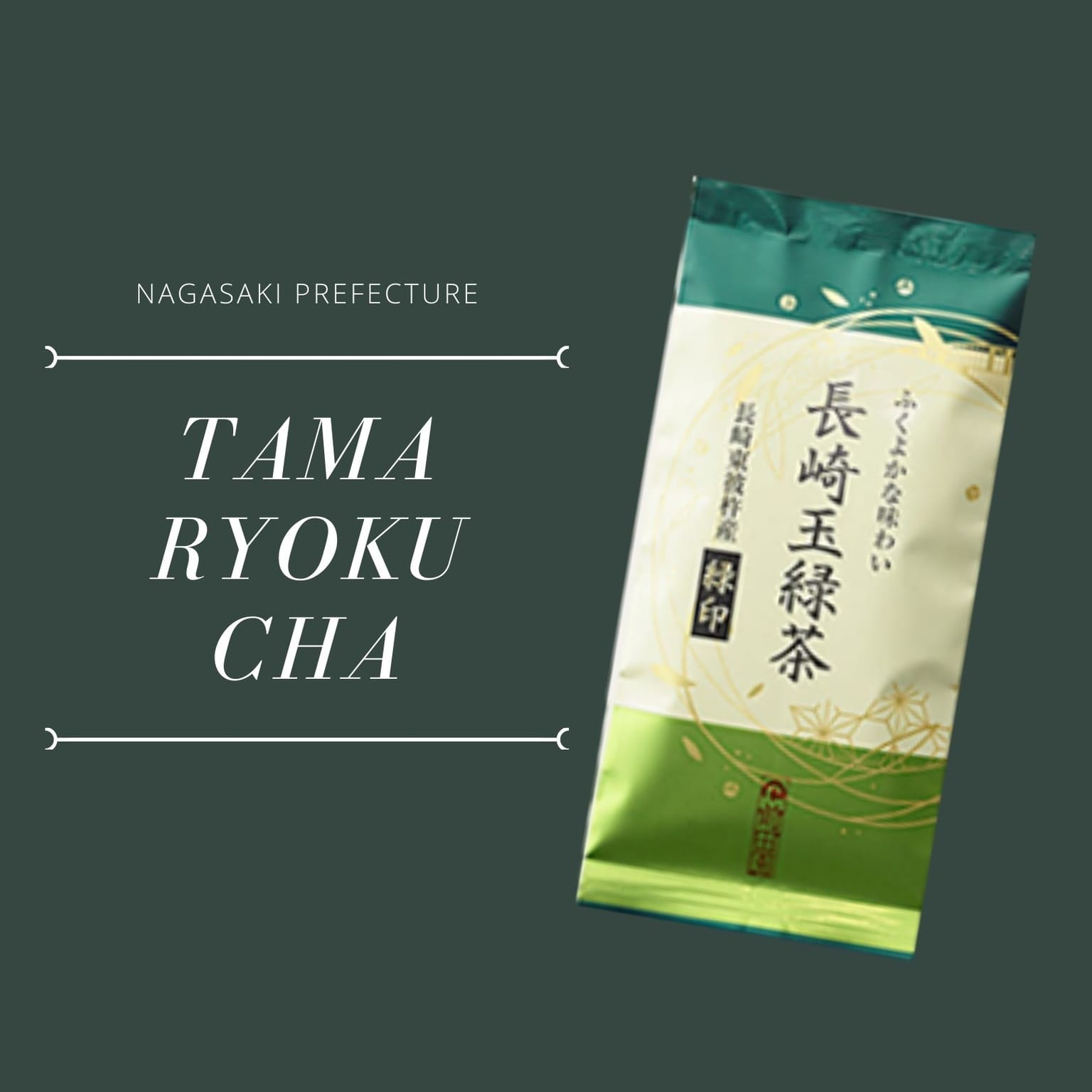As the weather starts to get a little cooler this autumn, why not diversify your at-home tea collection with a cup of Kyushu tea? Whether you prefer a soft and smooth taste like Fukuoka’s Yame-cha or a buttery rich one like Kagoshima’s Chiran-cha, you can count on teas from Kyushu, where green tea was first introduced to Japan, to make the seasonal change a little cozier.
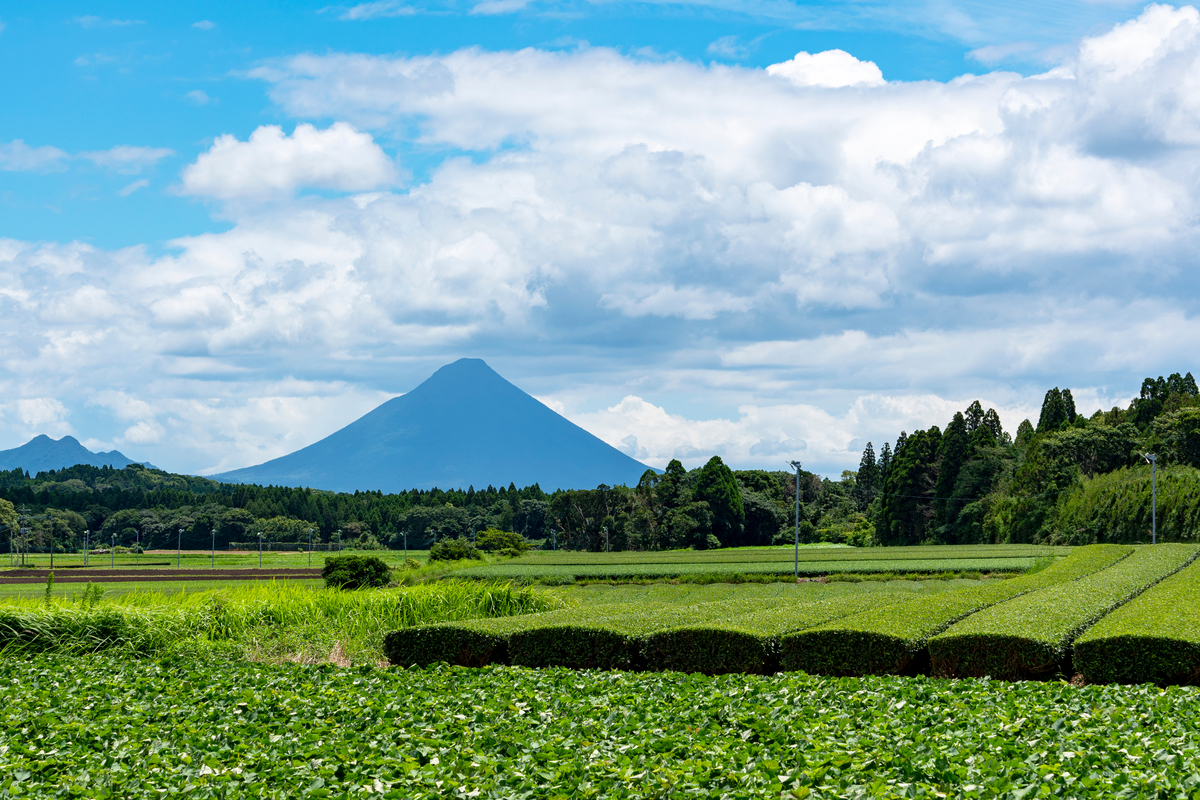
Tea plantation and Mt. Kaimondake in Kagoshima Prefecture
Kyushu and Tea
Although Uji and Shizuoka green teas may first come to mind when you think of sencha, did you know that the first-ever green tea plant in Japan grew in Kyushu? More specifically, green tea came by way of China when Buddhist master Eisai returned from a pilgrimage to found the first Zen temple in Japan based on Rinzai teachings. Eisai planted the seeds for green tea first on Mount Sefuri in Saga, after which it was transplanted to the Shofuku-ji temple in Fukuoka. From Hakata, Fukuoka, it then spread to the rest of Japan!
Now, Kyushu is still a significant producer of green tea with Minami-Kyushu City in Kagoshima, producing the most tea for a single municipality in the whole country. Teas from this region are also regularly awarded the highest honors, such as Nagasaki prefecture’s Asatsuyu Tama Ryokucha winning the 2018 New Wave Nihoncha Competition. Read on for taste profiles, suggestions and some tasty treats to accompany your Kyushu teas!
1. Fukuoka’s Yame-cha (八女茶)
Fukuoka’s teas from the Yame region, collectively known as Yame-cha (Yame tea), regularly win countrywide competitions. Their gyokuro — called “jade dew” for its beautiful color after steeping — is often considered the best in Japan: quite a feat given that gyokuro is already one of the highest grades of Japanese tea! The lush climate also makes Yame the top producer of gyokuro in the nation. Yame teas are grown on the gentle slopes in rainy and misty Southern Fukuoka where tea leaves are shielded from the sun to preserve their antioxidants and delicate flavor. As a result, Yame sencha is very mellow and sweet compared to other sencha while Yame gyokuro is rich, buttery, sweet, and low in astringency. With this flavor profile, it is easy to see why teas from Fukuoka receive such acclaim.
Alongside your cup of Yame cha, I suggest a Fukuoka specialty that can stand up to its sweet and mellow flavor: Meigetsudo’s Hakata Torimon. A multiple award winner, including a Monde Selection 2020 Grand Gold prize, Torimon is a delectable mix of wagashi and western pastry: it combines white bean paste with cream, butter, and sugar to form a fusion manju. Try out their Yame Gyokuro Manju as well if you have the chance!
2. Saga’s Ureshino-cha (嬉野茶)
Saga’s Ureshino tea is well known in Kyushu and for a good reason: the Ureshino region, blessed with many beautiful onsen and mountains, has been producing tea for almost 500 years. A small percentage of this tea is also continually produced using a traditional Chinese method — called kamairicha 釜炒りちゃ in Japanese — whereby tea leaves are briefly withered and then fired up in a hot pan. Whether created using the traditional method or the more modern steaming techniques, Ureshino-cha is a great green tea for those who are not fond of sencha’s vegetal notes. Its flavor profile contains the astringency that sencha is known for yet is balanced with an unmistakable sweetness. Indeed, it is said that Ureshino’s harmony of sharp and mellow, rich and sweet, is obtained by the unique temperature and rainfall variation in the area where it is grown, especially in April when the first leaves come into their prime.
To accompany your Ureshino-cha, I suggest reaching for one of Saga’s best omiyage, the Marubouro. With origins in Japan’s early trade with Europeans, this little round, flat cake- made of egg, flour, sugar, and honey, is crisp on the outside giving way to a soft interior. Its delicate taste also makes it pair well with (and not overwhelm) the equally delicate notes in Ureshino-cha.
3. Kagoshima’s Chiran-cha (知覧茶)
Kagoshima is the second largest tea producing prefecture in Japan after Shizuoka and Chiran-cha, tea harvested from around the Minami-Kyushu municipality, has much to offer in terms of depth and richness both of taste and color. Located at the southern tip of Kyushu island, the Chiran area’s tea leaves are some of the first to be harvested in the country every spring, known as the “first flush” of tea. Most Chiran-cha comes from the Yutaka midori cultivar of tea, one which produces this tea’s characteristic rich umami flavor. Since it is more sensitive to cold fluctuations than other types of Japanese tea plants, it thrives in Kyushu and especially sunny Kagoshima. The delicious and unique deep flavor of Chiran-cha is also said to be the result of its idyllic growing environment between the Sakurajima volcano, mountains, and the ocean.
To pair with your richly flavored Chiran-cha, look no further than Kagoshima’s most famous sweet, the Karukan. Made of Kagoshima yams, sugar, and rice flour, these deceptively simple souvenirs elicit much nostalgia across Kyushu. In fact, Karukan’s history stretches back over 300 years in Kagoshima when the notable Shimadzu lords of the Satsuma domain feasted on them on special occasions. Sip your tea with this historical delicacy!
4. Nagasaki’s Tama Ryoku-cha (玉緑茶)
Nagasaki’s Tama ryokucha has a fascinating flavor profile — rich and mellow yet also fresh and fruity. In order to make this tea, before cultivation in April and May, the tea fields are made pitch black by covering them with cheesecloth to prevent direct sunlight from hitting the leaves. This is said to produce the tea’s unique characteristics. Compared to sencha, Nagasaki’s Tama ryokucha is known for being less bitter and astringent with a brighter green color. The creation process is identical to sencha at the crude tea stage, but differs significantly while drying in rotating drums. Tama ryokucha is also scarce, hailing mostly from Nagasaki (around 90%) with a few producers in Saga and Kagoshima, and makes up only 3% of Japan’s tea production overall.
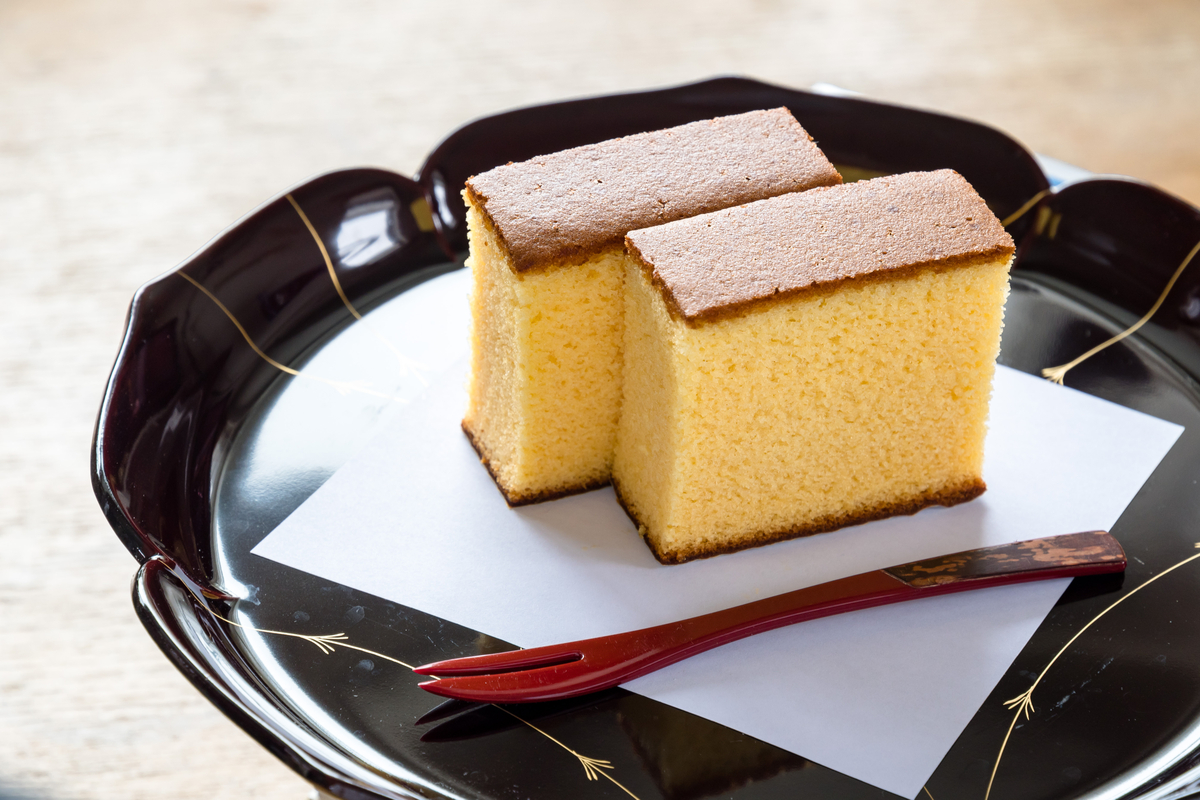
Why not sample this rare gem with a Nagasaki castella cake? This sweet (pictured above) came about via a sponge cake brought to Japan by Portuguese traders and missionaries in the sixteenth century. Some shops in Nagasaki produced their versions of the Portuguese dessert as early as the 1620s, calling them kasutera (the exact origins of the name are debated). Take a bite of history alongside your tea with Fukusaya’s famous castella cake, first baked in 1624!
Interested to know more about Kyushu’s teas? Nagasaki Ikedoki Tea is offering free online virtual and monitor tours for people who want to know more about their locally produced tea. See more info here.

